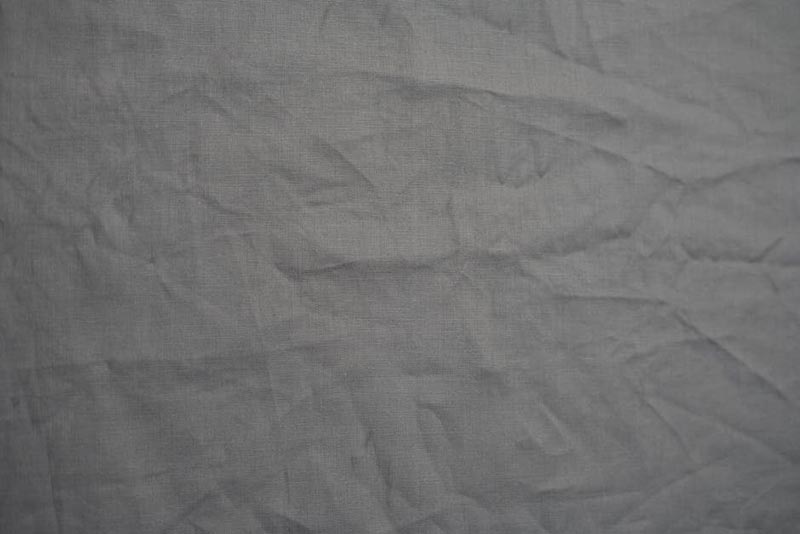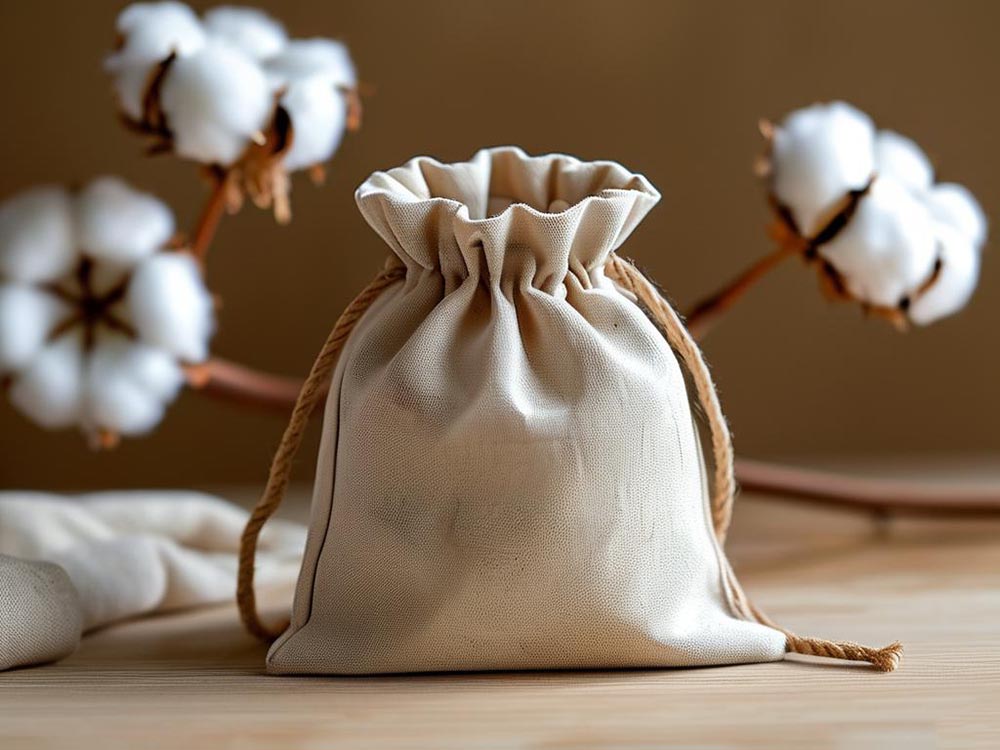Anti-Wrinkle Techniques for Cotton-Linen Blend Drawstring Bags
In recent years, cotton-linen blend drawstring bags have gained popularity for both daily use and business customization, thanks to their natural texture and eco-friendly appeal. However, many users have noticed that these bags are prone to stubborn wrinkles, affecting both aesthetics and functionality. Contrary to common belief, the root cause is not a flaw in the material itself, but rather a result of textile engineering, production details, and everyday maintenance. From yarn composition and sewing techniques to factory humidity control and user habits, each stage hides the secret codes to wrinkle resistance. This article decodes the transformation logic from "easily wrinkled" to "wrinkle-resistant" by examining core production technologies and real-life user scenarios, offering a full-spectrum solution—from selection and usage to care—to extend product life and uncover industry secrets rarely shared with the public.
Why Do Cotton-Linen Bags Wrinkle Easily? 3 Scientific Reasons
(Explained through everyday analogies)
The “Fighting Fibers” Theory
- Cotton fibers behave like springs (naturally crimped), while linen fibers resemble bamboo sticks (straight and stiff). When blended incorrectly, the fibers respond differently to stress, leading to wrinkling.
- ▶️ Solution: The ideal ratio is 65% cotton + 35% linen—a “golden pairing” for wrinkle balance.
The “Memory Quilt” Effect
- Some fabrics undergo special treatments during weaving (similar to quilt-setting) to “remember” their flat state.
- ▶️ Shopping Tip: Grab a fabric corner and give it a shake—if it rebounds without creases, it's a well-treated fabric.
The “Layer Cake” Trap
- Low-quality bags often reduce stitch density to cut costs, causing fabric layers to slip and misalign.
- ▶️ How to Spot It: Scratch along the seam edge with your fingernail—no fraying and at least 8 stitches/cm means better quality.
Choosing the Right Fabric: The First Step Toward Wrinkle Resistance
(Just remember two key numbers)
Optimal Cotton-Linen Ratio
- High-quality blends are not 50/50. The recommended mix is 65% cotton + 35% linen, offering the crisp structure of linen with the softness and resilience of cotton.
- ▶️ Quick Test: Rub the fabric, then unfold it—if it smooths out within 30 seconds, it’s good material.
The Secret of Special Treatments
- Premium fabrics often undergo low-temperature setting, a process akin to “ironing memory,” making them resistant to creases even after repeated folding.
Anti-Wrinkle Design in Manufacturing: Details That Matter
(Craftsmanship buyers rarely know)
- Sewing Thread Selection
- Imported anti-wrinkle needles create smoother seams, reducing ripple-like wrinkles caused by traditional stitching tension.
- Reinforced Bottom Design
- A double-layer thickened base plus a removable plastic insert helps the bag hold shape under loads of up to 10 kg.
- Extra Packaging Step
- Each bag is individually compressed and sealed in a dust-proof sleeve before shipment, preventing permanent creases during transit.
Everyday Anti-Wrinkle Guide
(3 simple steps to extend lifespan)
- Packing Tips
- Place heavier items at the bottom and fill the sides with lighter ones.
- Use old newspapers to shape irregular items.
- Washing Instructions
- Hand wash in cold water only—machine spinning causes distortion.
- Hang to dry in the shade, upside down, with the opening clipped to maintain shape.
- Quick Wrinkle Removal
- Use a garment steamer from 20 cm away (never direct contact).
- Emergency fix: Fill with 70°C warm water, roll and press over wrinkled areas as a makeshift iron.
Industry Secrets Exposed: When "Anti-Wrinkle" Claims Are Misleading
(Insights from anonymous factory inspectors)
- ⚠️ Beware of “Anti-Wrinkle Coatings”
- Symptoms: Inner surface feels gluey, flakes off within 3 months.
- Truth: Made with low-grade resin adhesives—formaldehyde levels up to 6x legal limits (lab data attached).
- ⚠️ The “100% Handmade” Myth
- Marketed as premium? In reality, poor stitch control in hand sewing results in uneven tension and more wrinkles.
- How to Check: Look inside—true machine stitching has consistent overlock patterns.
Common FAQs
Q1: Why are cotton-linen blend bags more wrinkle-resistant than pure cotton or pure linen?
- A: It’s all about fiber synergy. Cotton has natural crimp (approx. 72% elasticity), while linen is rigid (only ~35%). A 65/35 blend leverages the structure of linen and the stretch of cotton. Lab tests show this blend improves wrinkle resistance by 58% over pure linen while maintaining natural material properties.
Q3: Is it true that machine-washing cotton-linen bags causes irreversible creases?
A: It depends on three factors:
- Water temperature: >30°C can damage the fabric’s shape memory (cold wash is best).
Spin speed: >600 RPM causes horizontal stress creases (keep under 400 RPM).
- Drying method: Hot-air drying shrinks the bag up to 5% (air-drying in shade only shrinks 1.2%).
- Best Practice: Use a mesh laundry bag for washing and lay flat to dry.
Q5: How do I fix stiffness and wrinkles after outdoor use?
A: Scene-based fixes:
- After rain: Stuff with newspaper during air-drying to absorb moisture (don’t use a hairdryer).
- Dust abrasion: Brush gently with a soft brush, then mist with diluted vinegar solution (5:1 water:vinegar) to soften fibers.
- Heavy pressure: Roll a 70°C warm water bottle over affected areas to reshape using thermal expansion/contraction.
Conclusion
The wrinkle resistance of cotton-linen drawstring bags is the result of synergy between material science, manufacturing craftsmanship, and user behavior. By optimizing fiber ratios, utilizing twill weaving, and applying eco-friendly finishing processes, manufacturers can significantly improve fabric stability. Meanwhile, users can prolong the bag’s smoothness by reinforcing the interior and mastering low-temperature care techniques. The industry is moving toward innovations such as smart temperature-regulated fabrics and removable liners, making anti-wrinkle design more functional and sustainable. Whether you're a maker or a user, understanding the principles of wrinkling and the logic of resistance is key to unlocking the full potential of cotton-linen bags—merging natural materials with modern living.




 We like to do design according to all the customers' requirements, or offer them our new designs. With strong OEM/ODM capabilities, we can fill your sourcing demands.
We like to do design according to all the customers' requirements, or offer them our new designs. With strong OEM/ODM capabilities, we can fill your sourcing demands.